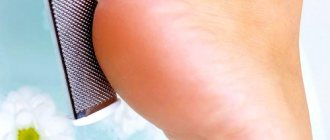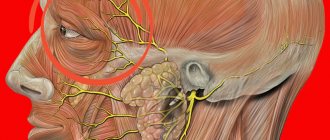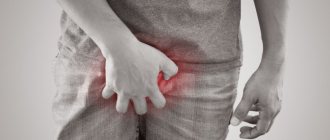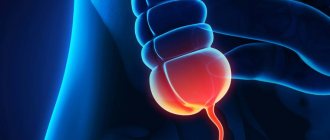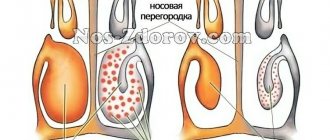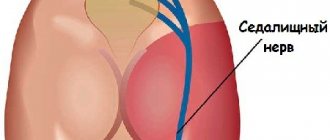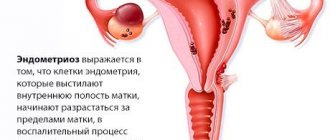Why does your heel hurt when walking and how to get rid of this unpleasant feeling? This question is asked by many patients suffering from specific, inflammatory and structural pathologies of the musculoskeletal system. Most often, the heels of the feet hurt when walking in people who are overweight, have problems with the metabolism of purine acids, or with developing ankylosing spondylitis. Other pathologies cannot be excluded: bursitis and Achilles bursitis, plantar tendovaginitis, ankle sprain, myositis, heel spur, consequences of calcaneal injury, etc.
Painful sensations do not appear without accompanying pathological tissue changes. Simply put, in a completely healthy person, even long walking will only lead to a feeling of muscle fatigue. the maximum that will hurt is the muscles and ligaments that are subjected to excessive or excessive tension.
Pain is always a signal of distress, trouble and the development of pathology. Pain occurs only if a change in tissue structure leads to increased pressure on nerve endings, penetrating ligaments, muscles, connective tissue and blood vessels. Growths on the heel bone injure the ligaments, muscles and tendons, causing pain and inflammation. Deformed muscles and tendons cannot cope with the tasks assigned to them and, if over-tensioned, also cause pain.
We suggest you familiarize yourself with the most common causes of this symptom. The article also provides recommendations on what should be done to treat and get rid of unpleasant sensations.
Causes
The main sources provoking the appearance of malaise:
- heel spur or plantar fasciitis;
- fascial overstrain;
- bursitis;
- achilles;
- diseases of the spine;
- reactive arthritis;
- infections, incl. and sexual;
- gout;
- problematic shoes;
- heel bone bruises and other bruises;
- obesity;
- standing on your feet for a long time;
- atrophy of the subcutaneous fat pad in the heel;
- tumors;
Additional prerequisites: tarsal nerve syndrome, Morton's neuralgia, northern disease, Haglund-Schinz pathology, ankylosing spondylitis, erythromelalgia, metastases to the lower limb, hereditary sensory neuropathy, hallux valgus, fissures, mycoses, skin dermatitis.
Ask your question to a neurologist for free Irina Martynova. Graduated from Voronezh State Medical University named after. N.N. Burdenko. Clinical resident and neurologist BUZ VO \"Moscow Polyclinic\".Ask a question>>
Causes of heel pain
Many people are interested in why the heel hurts? There are many reasons for this, including the development of diseases. When walking, pain may occur:
- due to excess weight,
- thinning of the subcutaneous layer of the heel area,
- using uncomfortable shoes,
- daily runs over long distances,
- standing for a long time.
Sometimes the heel hurts when walking under the influence of systemic diseases. One example is rheumatoid arthritis. This is a serious joint disease that can lead to various complications. The pain appears first when walking, then becomes constant.
Another cause is ankylosing spondylitis, when severe pain is felt in the heel bone, making it impossible to stand. Pathology can also occur due to the accumulation of uric acid salts, which cause acute sensations and swelling.
Sometimes discomfort is not associated with any specific problem, but against the background of psychological problems. The pain in this case is real, but has no physiological pathologies.
Among the prerequisites are infectious diseases:
- Reactive arthritis. Provoking factors are infectious diseases with a latent form.
- Tuberculosis of bone. Purulent formations appear, the bone substance loses its properties. This causes foot deformity and lameness.
- Osteomyelitis of the heel. It consists of inflammation of the constituent areas of bone tissue.
The prerequisites may also be traumatic in nature. In such situations, we are talking about tendon stretching and rupture, bruises in the heel area. In the latter case, the connective tissues also become inflamed. With fractures, deformation of the foot is noted and bruising appears.
When it comes to heel pain, the causes and treatment are closely related. The doctor makes prescriptions after conducting research, collecting anamnesis and studying symptoms.
The main cause of foot pain in children is Schinz's disease. It was noticed that girls often have heel pain up to the age of eight, and boys - up to 10. The main symptom of the disease is pain, which is localized on the back surface of the heel. This pathology leads to persistent disturbances in blood supply to the bone tissue of the foot.
In childhood, diseases can also be associated with flat feet. If you do not begin to correct the problem in a timely manner, there is a high probability of curvature of the spine, which provokes pain.
Heel spur or plantar fasciitis
A spur means a chronic ailment resulting from injury to the fascia or ligament . Subsequently, inflammation causes the growth of an osteophyte, a bone process that cuts into the soft tissue and disrupts its integrity. Visually, no changes are visible, but if you palpate the area, the thorn will be felt. The culprits behind the growth of spurs are flat feet, extra pounds, diabetes, rheumatoid arthritis, poor blood supply to the extremities, and disruptions in the nervous and vascular system.
The onset of fasciitis goes unnoticed, then more and more often severe pain occurs after walking, localized in the lower part of the sole, and thickening is observed.
The nature of the pain
is high, burning, intensifies at the time of overload , sometimes at rest. Intermittent, subsiding when located further to the nerve endings.
Diagnosis and treatment
See a surgeon, podiatrist, or physical therapist. To establish a complete clinical picture, he will need clinical and biochemical blood samples, MRI, radiography, and urinalysis. Non-steroidal anti-inflammatory drugs Diclofenac, Ibuprofen, Tempalgin, Analgin are prescribed. Anti-edema ointments Voltaren, Indomethacin, Diclogel. Local hormonal agents Hydrocortisone. Diprospan is injected into the affected area. Special orthopedic insoles will help alleviate the condition. Electrophoresis with novocaine, laser, X-ray irradiation, UHF, mud therapy, paraffin baths, ozokerite. Therapeutic gymnastics and physical education are required.
The ineffectiveness of conservative methods involves traditional open or endoscopic surgery. At home they do mustard plasters, contrast baths, and foot massage.
Fascial strain
An inflammatory reaction in elastic tissues leads to plantar fasciitis.
Chronic, long-term pathology provokes the growth of osteophytes. Overexertion occurs due to excessive physical activity in people suffering from diabetes, gout, atherosclerosis, flat feet, arthritis, when the leg is in the wrong position. The harbingers are discomfort in the lower part of the heel, burning sensation when stepping on, difficulty in climbing stairs, or prolonged activity. Nature of pain
From acute to aching, especially in the morning, after walking. Quiets during rest.
Diagnosis and treatment
An orthopedist or surgeon will visually examine the limb. He will send you for an X-ray and micro-resonance examination to rule out a possible crack or fracture. NSAIDs Ibuprofen, Diclofenac, Baralgin, Ketonal, Ketoprofen, and glucocorticoids are used. Externally, Zolotoy Us cream, products based on cinquefoil, plantain, and shark oil. Electrophoresis, phonophoresis, ultrasound, shock wave method, exercise therapy, massage, mud pads, and stretching exercises to lengthen the fascia give a good outcome. Well-known folk methods of taking a bath with sea salt and iodine.
Lotions with grated horseradish, garlic, hot crushed potatoes.
What you can do yourself to relieve heel pain
If the examination does not show severe dysfunctions and foot diseases, follow simple rules:
- Losing weight and moderate and feasible physical activity will help relieve pain. If you don’t have time to exercise, make it a rule to walk for an hour or two before going to bed. Install the Pedometer app on your smartphone and take at least 10,000 steps daily. Eat healthy, give up foods that are useless for your body, and your weight will return to normal. You will feel invigorated and full of energy.
- To avoid heel pain, switch to high-quality shoes with orthopedic inserts. If you cannot afford it financially, choose comfortable orthopedic insoles. Remember, heels higher than 5 cm cause great harm to the foot.
- Moisturize dry skin on your heels with masks and salt baths. Clean off the stratum corneum using peels and pumice. Pamper your feet with nourishing cream.
- Find a professional massage therapist with medical training. Get a massage every six months.
- Sign up for a swimming pool and do morning exercises. Learn exercises to help keep your feet in better condition.
Bursitis
Inflammatory reaction of the mucous membrane and synovial bursa. Bursitis can be specific due to bacteria gonococci, streptococci and nonspecific due to injuries. The fluid accumulating in the bag can be purulent, serous-fibrinous, serous. Under the influence of the contents, the bag stretches, calcium deposits accumulate in it, which affect movement and performance. Prerequisites: polyarthritis, failure of urate metabolism, tuberculosis, infectious microorganisms, tight shoes.
Pathology is indicated by general malaise, fever, bulging of the hindfoot in the case of purulent exudate, redness, swelling on the ankle, pain in the foot, and the formation of fistulas.
Nature of pain
Sharp, acute, often latent in the chronic phase. Worse at night, after walking.
Diagnosis and treatment
An orthopedist or surgeon will help with the issue. We need x-rays, MRI, ultrasound, puncture of synovial contents, biochemical blood test. Nonsteroidal anti-inflammatory and hormonal injections are prescribed. Abundant accumulation of pus is stopped by pumping it out into this area using a puncture. The joint is mobilized with it. Electrophoresis, magnet, heating, paraffin therapy, kinesiotherapy are used. In the severe stage, surgical intervention is reasonable. Warm salt compresses, cabbage leaves, and baths are made at home.
For prevention, the load is reduced; in case of the slightest cuts, the foot is treated with an antiseptic.
Achillitis
Damage to the Achilles tendon occurs due to, for example, grueling training in athletes, frequent wearing of heels, a shortened tendon from birth, loss of elasticity of the tendon fibers, mainly after 40 years. Additionally, diabetes mellitus, heel spur, gout, Haglund's deformity, Achilles bursitis, narrow shoes, flat feet. Women are more susceptible to achillesitis. The basis of the disease will be swelling, redness, hotness of the area, and a peculiar crunching sound when moving.
Also, a person has pain in the heel when walking, which radiates to the junction of the bone and tendon.
Nature of pain
Strong, burning near the heel, there is pulsation at the site of the tendon.
Diagnosis and treatment
A traumatologist and surgeon will conduct an examination. To exclude a serious fracture, you will need x-rays, ultrasound, as well as blood and urine tests. To relieve spasms, analgesics, antispasmodics, and antipyretics are used. Medicines to improve blood circulation, vitamins. The leg should be at rest, so the doctor will apply a splint or plaster. Cold, decongestant, and healing ointments are applied to the area. Subsequently, moderate physical activity and wearing the right shoes are observed.
In the absence of the desired effect or in case of severe rupture of the ligaments, surgery with suturing of the tendons is required; rehabilitation lasts from 1 to 3 months.
Heel hurts when walking: what to do, how to treat?
The first thing to do if your heel hurts when walking is to find an experienced doctor, conduct an examination and find out the real cause of such a symptom. You should not engage in fortune-telling, assume the presence or absence of one or another disease. Do as the doctor recommends: make an appointment with a specialist.
You can do this right now. Call our chiropractic clinic to schedule a consultation with a chiropractor or podiatrist. The first appointment is free for all patients.
If your heels hurt when walking, treatment can only be directed at the underlying disease, since all discomfort is just a symptom. Most pathologies of the musculoskeletal system can easily be effectively treated using complex interventions. Massage is used to speed up recovery processes by improving microcirculation of blood and lymphatic fluid. Physical therapy, kinesitherapy, acupuncture and pharmacopuncture are also used. Osteopathy is prescribed when it is necessary to activate the processes of spontaneous restoration of changes in connective, ligamentous, muscle, cartilage and bone tissue.
The course of treatment is developed individually, taking into account the presence of concomitant pathologies in the patient. Therapy depends on the diagnosis.
Spinal diseases
When heel pain occurs when walking, the source may be inflammatory diseases of the spinal column . One of these will be ankylosing spondylitis. It refers to damage to joints and ligaments due to an aggressive immune system. Ossification of the vertebrae, discs, and intervertebral joints occurs. They grow together, the ridge loses its flexibility and elasticity. Factors include hypothermia, trauma, disruptions in the endocrine system, pathologies of the urinary tract, stomach, pathogens streptococci, klebsiella. The very first signal if your heel hurts when standing still and walking. Failure to consult a doctor results in all the vertebrae fusing together to form one rigid arch of bone.
With osteoporosis, discomfort is immediately observed in all joints and is especially severe in the spine.
Degenerative-dystrophic changes in the heel bone lead to spasms and sensitivity when stepping. Violations are provoked by both calcium deficiency and excess.
Nature of pain
Systematic, increases towards night, radiates to the buttocks and legs. A characteristic feature is the defeat of two heels at once.
Diagnosis and treatment
To identify ankylosing spondylitis and osteoporosis, the patient is examined by an orthopedist and neurologist. X-ray, MRI, CT, general blood test, and rarely antigen determination are required. Non-steroidal anti-inflammatory drugs Ibuprofen, Flamax, Flexen, Metindol, Movalis are prescribed. Muscle relaxants Mydocalm, Tolpesiron, glucocorticoids. Local injections with glucocorticoids in the heel area, lotions with Dimexide solution. Cryotherapy with liquid nitrogen into the spinal column, hirudotherapy, magnet, laser, ultrasound, ozokerite, phonophoresis with hydrocortisone, radon baths, massage, therapeutic exercises have a beneficial effect.
Proper nutrition, taking vitamin complexes, and visiting sanatoriums are a must.
Possible diseases
Most often, heel pain is a symptom of quite serious diseases.
Rheumatoid arthritis
It affects the joints of the hands and feet and is caused by a disruption of the human immune system. The disease begins with slight pain, joint mobility is limited, and as the disease progresses, deformation of the hand or foot occurs.
Ankylosing spondylitis
Inflammatory processes occur in the spine and joints, and the immune system struggles with bone and joint tissue. Inflammation disrupts the motor function of the joints, and ossification of the vertebrae occurs. One of the signs of the disease is heel pain, which makes it difficult to simply stand on a hard surface. The disease leads to immobility of the vertebrae fused together.
Gout
Excess of uric acid salts in joints. The nature of the pain is acute, the joint turns red and swells, and its temperature rises. Without treatment, the soreness may last for several weeks.
Osteomyelitis
A bacterial disease that occurs in the bone itself, its marrow and tissues, causing a purulent process and tissue rejection. Acute piercing pain occurs and intensifies with movement.
Bone tuberculosis
Characterized by the formation of a cavity or fistula in the tissues of the bone and joint, a hole is formed in the skin. Requires immediate treatment, as it is dangerous for the development of gangrene of the limb. Rapid relief of inflammation ensures rapid healing of the bone or joint, which does not bother the patient for quite a long time.
Reactive arthritis
Occurring against the background of another infectious disease: salmonellosis, dysentery, gonorrhea, chlamydia and others. The doctor will be able to tell why the right heel hurts if the disease causing the pain is detected.
Fasciitis
Heel spur. The disease is accompanied by inflammation of the bundle of fibers between the skin and bone called fascia. The pain occurs in the morning and increases with heavy exertion.
Inflammation of the Achilles tendon (or tendinitis)
It occurs as a result of overloading the foot when running or overstraining the calf muscles, or when wearing unsuitable shoes. There is pain in the heel area, accompanied by redness and swelling. A tendon may rupture, making it impossible to walk.
Oncology
New growths on the bone tissue of the heel cause pain, moderate at first, but it intensifies over time. The earlier a tumor was detected, the more likely it was to be detected and removed without metastasizing to other tissues.
Some neurological conditions can cause heel pain, such as calcaneal neuropathy.
Reactive arthritis
An inflammatory process that affects one or more joints . Sources are urogenital, intestinal pathogens. A disorder of the immune system causes heel pain when walking. Additional factors include poor nutrition, bad habits, excessive stress, injury, wearing heels, and certain professions. Develops 1-6 weeks after infection. Localized in the knees, ankle area, foot, tendons.
Reactive arthritis is often accompanied by enthesitis of the tendon, then the sensations are concentrated on the posterior surface, if enthesitis of the plantar aponeurosis, then in the heel area.
Nature of pain
The initial stage is unnoticeable, then unbearable, aching, constant, increasing in the morning and even when the person is resting.
Diagnosis and treatment
The rheumatologist will need X-ray images, micro-resonance examination, computed tomography, ultrasound, blood samples, PCR smears from the genital tract, stool, consultation with a urologist, venereologist. Medicines NSAIDs, corticosteroids, chondroprotectors in case of osteoporosis Arta, Structum, Chondroitin, intra-articular, periarticular injections. The protracted form is eliminated with basic drugs Sulfasalazine, Methotrexate. Gels with analgesic and anti-edematous effects are applied locally. Physical procedures: phonophoresis with hydrocortisone, sinusoidal-simulating current, cryotherapy, ultraphonophoresis, heat, laser, massage, exercise therapy.
Baths with Dead Sea salts, then healthy eating, sanatoriums.
What tissues can cause heel pain?
A variety of components, tissues, blood vessels and nerves are concentrated in this part of the lower limb. Therefore, pain can manifest itself in each of them. Let's consider which structural elements of the heel can experience the consequences of pathogenic causes and signal pain about this.
- Heel bone . This part of the foot most often experiences pain. They usually occur as a result of injury, walking on hard surfaces, and can also be the result of using uncomfortable shoes. At the same time, pain in the heel bone arises against the background of contagious bacterial or viral pathologies;
- Fascia and tendons . The whole bundle of ligaments of the ankle joint is more often than others subject to sprains and dislocations. These are the reasons that cause pain in the heel area. In this case, the pain affects the fascia of the joints and ligaments;
- Skin and underlying tissue . These parts of the lower limb may cause pain in the heel as a result of the inflammatory process. In addition, pathologies of the subcutaneous tissue and the skin itself can be provoked by pathologies such as diabetic angiopathy, gout, heel spur, sprain;
- Achilles tendon . This element of the foot is often the cause of pain in the back of the heel. The Achilles tendon may suffer due to mechanical stress or inflammation;
- Synovial bursae . There are two of them in the heel area. Most often, pain in this area occurs due to inflammation or the development of bursitis;
- Intertarsal joints . There are several of them in the heel area. They are affected by pain due to gout or inflammation. Mechanical factors, hypothermia or injury may also influence;
- Blood vessels and nerve endings . These elements of the foot suffer due to various causes - from injury to serious infectious diseases.
The most common cause of heel pain when walking is uncomfortable shoes. This factor especially concerns women who prefer high-heeled shoes. Constant tension causes rapid leg fatigue. At the same time, a load is created on the blood vessels, as a result of which blood circulation in the lower extremities deteriorates.
A lot of nerve receptors, veins and capillaries are concentrated in the heels. And even the slightest excess pressure on them provokes pathological changes in the walls of blood vessels, causes pinching of nerve roots, and creates a load on tendons and nerves. As a result of this, pain develops in the heel.
At the same time, other etiological factors for the appearance of heel pain when walking are possible.
In orthopedic practice they are usually divided into two categories:
- Causes of pain, as a secondary phenomenon, against the background of contagious and non-contagious diseases;
- Causes of pain not associated with other diseases.
The classification of both groups sometimes includes several reasons at once. For example, heel pain can occur due to gout, and worsen due to a dislocation or bruise.
Causes not related to other diseases:
- Problems with shoes. For women it is high heels, for men it is the wrong size;
- Increased pressure on the feet during active physical movement;
- A sharp increase in body weight;
- Atrophy of individual elements of the heel;
- Bruise or sprain.
A more extensive category of causes caused by any disease is:
- Reactive arthritis;
- Sexual infections;
- Bursitis;
- Gout;
- Achillitis;
- Anomalies of the supporting system, in particular – anatomical and physiological pathologies of the spine, as a result of which additional stress is created on the legs;
- Heel spur.
Infections
Tuberculosis, osteomyelitis, intestinal bacteria, chlamydia, ureaplasma, dysentery bacillus - all this serves as a reason for heels to hurt when walking. Moreover, if the infection is genital, then it is indicated by discharge from the genital tract, temperature, burning and pain when urinating, and pulling cramps in the lower abdomen. Intestinal means pain in the stomach, diarrhea or constipation, loss of appetite, weakness, nausea, lethargy. Inflammation in the lungs leads to cough and general weakness. Damage to the bone in a certain place is caused by swelling in the focal area, heat, and redness.
The purulent contents press, the patient feels a sharp malaise.
Nature of pain
Drawing, aching with genital infection. Expanding, drilling in a specific place with osteomyelitis. Constant, pressing in tuberculosis.
Diagnosis and treatment
If there is a suspicion of sexual pathology, the orthopedist will refer you to a venereologist or urologist; stomach problems are treated by a gastroenterologist. Tuberculosis infectious disease. An X-ray, MRI, ultrasound, smears for intimate microflora, urine and blood tests will be required. Depending on the reason, a specific scheme is selected. Tuberculosis is treated inpatiently using penicillin antibiotics. Osteomyelitis also, purulent contents are removed surgically. Problems with the digestive tract require taking antibacterial medications, after prebiotics.
Urological diseases are treated with antibiotics, local vaginal tablets Terzhinan, Betadine, Metronidazole, Clindamycin, ointments, in some situations, the clinic carries out washing of the intimate organs, baths with medicine.
Why do my heels hurt?
A large number of people face the problem of pain in the heel, pain in stepping, and the cause is unclear. The problem is that your feet experience a lot of stress throughout your life. According to statistics, on average, every day a person walks 3-4 thousand steps. In this case, the feet have to bear a load 1.5-2.5 times greater than their own body weight. In this case, when heels hurt, the reason may be hidden, but besides it, there are other factors that contribute to the appearance of unpleasant sensations.
Heel pain when stepping
When your heel hurts, it hurts to step on, and you want to find out the reason as soon as possible. The most common factors causing pain are:
- Heel bone fracture.
In this case, not only does the heel hurt, it is painful to step on it, but you can also notice deformation of part of the limb. At the same time, the foot swells and hematomas appear on it. - Injury.
The pain from such an injury is burning and it is impossible to stand on the injured leg. - Ankylosing spondylitis.
If your heel hurts or it hurts to step on, this could be the reason. Symptoms appear against the background of a hostile attitude of the immune system towards ligamentous and joint tissues. - Calcaneal epiphysitis.
When your heel hurts and it hurts to step on, the cause can sometimes be hidden in this ailment, which is a microtear of the connective tissue in the heel bone area. - Gout.
Pain is a consequence of excess urate. As a rule, the joints of the big toes suffer from the disease, but sometimes the heels also get affected.
Heel pain when walking
When your heels hurt when walking, the reasons are as follows:
- Bursitis.
Inflammation that develops against the background of injury or systematic irritation. - Achilles tendinitis.
In this case, the heel hurts when walking due to excessive stress on the calf muscles. - Diabetes.
Symptoms occur as a result of poor circulation in the foot. - Reactive arthritis.
The cause of the disease is open infections - urogenital or intestinal. Heel pain reminds you not only when walking, but also at night. - Tuberculosis of bones.
Beginning with the death of small areas, the infectious process gradually spreads to large areas. - Malignant tumors.
Heel pain after running
This is a common complaint. As practice shows, the heel often hurts after running due to poor technique. To be precise, unpleasant sensations appear when a person places his feet incorrectly. For many, the main load falls on the heels, which negatively affects its condition and is incorrect - the limb should land exclusively on the forefoot.
Another likely reason why your heel hurts or why it hurts to step on a limb is sexually transmitted infections. Gonorrhea or chlamydia - to be more specific. It often happens that hidden pathological processes manifest themselves as reactive inflammation. Among other things, pain may indicate psoriatic arthritis.
Heel pain at rest
This symptom is dangerous. When heel pain occurs at rest, it may indicate developing rheumatoid arthritis. In the early stages, pain only bothers you during exercise, but over time, the discomfort becomes constant and torments from morning to morning. Sometimes the symptom appears as a result of fatigue, against the background of infectious diseases of the genitourinary system or intestines.
Heel pain after sleep
The likely cause of this is the fascia of the sole. The heel hurts, it is painful to step on it in the morning after sleep due to the dense formation that forms in the connective tissues. Negative changes occur as a result of prolonged standing or wearing uncomfortable shoes. If the fascia is not treated, it will transform into a heel spur. The structure of the latter is more dense, and pain, if present, can appear not only in the morning, but also during the day.
Some patients experience soreness after sleep due to osteoporosis. The development of the disease can be stimulated by:
- wrong diet;
- early menopause;
- prolonged lactation period;
- nicotine addiction.
Heel pain after ankle injury
Severe bruises or other injuries – heel pain has its causes. The sensations in this case are pronounced. The pain is burning, it feels like a needle is piercing your leg. Moreover, one gets the impression that with every step it digs deeper and deeper into the body. If such sensations appear, you should try not to step on the affected limb and seek the advice of a specialist as soon as possible.
Gout
The disease occurs due to a metabolic failure; uric acid is not properly excreted from the body , which leads to salt deposits in the joints, near the joint tissue, and in the kidneys. Gout can affect one or more joints. Companions include excessive consumption of red meat, alcohol, physical inactivity, kidney failure, kidney cancer, polycystic disease, and leukemia. Distinctive features will be redness, convexity of the affected area, shiny skin, hotness of the area, crunching in the chronic phase. The patient suffers from pain in the heel when walking and after sleep.
Sometimes the attacks are so severe that people cannot sleep properly even at night.
Nature of pain
Intense, the attack lasts from 1 to 3 weeks, then subsides.
Diagnosis and treatment
The rheumatologist will need a CT scan, ultrasound of the kidneys, culture of synovial material, puncture of joint data, and an x-ray to be able to see the course of the pathology after at least 5 years. Non-steroidal anti-inflammatory drugs Butadione, Indomethacin, Naproxen, Methindol can eliminate the attack. Orotic acid, Allopurinol, Thiopurinol, Milurite will reduce the concentration of uric acid. The acute course is relieved by Colchicine. UFO, puncture evacuation for atypical form.
Diet and giving up bad habits will become important.
What diseases cause heel pain?
Comfortable shoes and the absence of injuries are not a guarantee of health, because internal diseases affect the heels. Why does the heel hurt inside, but there are no visible reasons for this? Sometimes only a consultation with a doctor will reveal all the secrets of the appearance and quality treatment of these unpleasant pains.
Chronic inflammatory processes
Metabolic disorders due to gout and inflammation in the joints due to arthritis sometimes also lead to problems with the legs. The heel tendons become inflamed, which causes pain. Timely examination, testing and identification of one of these diseases will help to quickly eliminate heel pain.
The entire connective tissue of the sole becomes completely compacted and can become inflamed for various reasons. If a person wears tight shoes, then this process will only speed up. If you ignore such pain, then over time calcium salts are deposited in the tissues and a spur forms on the heel.
Inflammation of the Achilles tendon also leads to intense pain when walking. Pain syndrome occurs on the inside of the soles above or below the inflamed heel.
If a spur appears on the heel, a person feels pain from the side of its occurrence in a sitting and lying position. The situation improves with walking, but special treatment for the spur cannot be avoided. It is a compacted growth that affects part of the sole. It can be diagnosed using ultrasound or x-ray examination.
It is very painful for patients to walk with cracks that appear on the soles. The heel becomes rough, and deep cracks form in the thick layer of skin. When walking, they cause severe pain and sometimes even bleed.
Infectious diseases
If there is a chronic infection in the body, then the heels will hurt not only when walking, but also during rest. The cause is chlamydia, gonorrhea and other sexually transmitted diseases. Intestinal infections, such as dysentery, also lead to heel pain, but very rarely.
One of the complex diseases is tuberculosis of the calcaneus. Its danger is that it spreads quite quickly and progresses in the absence of treatment. For these reasons, a sore heel always needs a thorough examination.
Osteomyelitis of the heel bone causes muscle pain and fever. Acute infections respond well to treatment in almost all cases, but treatment is usually long-term.
Systemic diseases
The tissue that connects a patient's toes to the heel bone along the foot can become inflamed during arthritis. The pain is increasing in nature. In the morning it manifests itself especially strongly, and to reduce it, you need to massage the foot. After it, relief appears until the person climbs the steps or stands on tiptoes.
In the case of reactive arthritis, when the body is attacked by various infections, for example, due to sexually transmitted diseases, it is painful for the patient to walk and even sleep with such a problem.
Chronic inflammation of certain joints and the spine, called ankylosing spondylitis, affects the legs. Gout often spreads not only to the big toe, but to the entire surface of the foot. In addition to pain, swelling and redness of the heel and entire foot appear.
It is difficult to relieve annoying pain on your own; it is better to seek help from a doctor. It is necessary to do an ultrasound and other diagnostics, which will help to quickly find out the cause and decide on treatment.
Problem shoes
Often heel pain when walking appears due to wearing tight, uncomfortable shoes . The new one puts pressure on the heel area; there are also places under the insole that put pressure on the foot. As a result, by the end of the day you simply cannot step on it. There is a burning sensation, heat, heaviness, and pain on palpation.
Nature of pain
Moderate to severe, aching.
Diagnosis and treatment
At your appointment, your podiatrist will feel your heel. General recommendations will be given: avoidance of unsuitable shoes, special orthopedic insoles.
A severe attack can be relieved with the analgesics Tempalgin, Baralgin, Nise, Ketoprofen. Externally ointment Diclofenac, Voltaren, Dolgit, Ibuprofen.
Diagnostics and types of examinations
Diagnostic methods and types of necessary studies depend on the patient’s complaints. Depending on the identified abnormalities, the doctor selects the necessary procedures that are necessary to make the correct diagnosis.
What tests can be prescribed for heel pain:
- X-ray
- Ultrasound and MRI
- Blood sugar test
- General blood analysis
- Bacteriological research
- Blood biochemistry (uric acid level)
- Bone biopsy.
Heel bone bruises
Violation of the integrity of the tissue structure leads to dislocations, sprains, and ruptures of ligaments. Factors include an unsuccessful jump, falling, wearing heels, walking on bumpy, uneven surfaces, and various sports .
A blow is indicated by hematoma, swelling, limping, and spasms. A heel fracture is caused by severe discomfort, it is impossible to fully stand on the limb, there is redness, tension in the heel tendon, and a hematoma in the center of the sole. A bone fragment provokes bleeding, if nerve fibers are affected, numbness and insensitivity are observed. Nature of pain
Intense to medium.
Diagnosis and treatment
A traumatologist or surgeon, based on the patient’s complaints, will give a referral for an X-ray or MRI. If the bone is broken, it is set under anesthesia, a plaster cast is applied, and nonsteroidal drugs Dexalgin, Dolaren, Nurofen, and Nimegesic are taken. Bruises are relieved with analgesics, external ointments Troxevasin, Lyoton.
At home, patches with Dimexide, vodka dressings, applying cabbage leaves and beans are good.
Obesity
This refers to excess fat deposits in the tissues of the body. Excess weight is dangerous because it prevents the development of diabetes, myocardial infarction, stroke, and atherosclerosis. Premises include physical inactivity, eating errors, endocrine disorders, stress, lack of sleep, pregnancy, lactation. Heavy weight puts increased stress on the spine, which negatively affects the legs. The soles begin to ache, the calves swell. Hence varicose veins, thrombosis, numbness of the lower extremities.
Nature of pain
Aching, constant.
Diagnosis and treatment
An endocrinologist deals with metabolic disorders. To begin with, general blood tests, urine tests, tests for thyroid hormones, ultrasound, MRI, and cholesterol tests are taken.
A nutritional plan is selected, and if there is no result, medications of the amphetamine class, Amfepramone, Phentermine, or Adiposine, are prescribed.
Standing for a long time
People of certain professions are susceptible to this syndrome hairdressers, salesmen, postmen. Those who endure great physical stress on their joints. It is expressed by spasms in the foot, swelling, swelling of the calves, and pain on palpation.
Nature of pain
Dull, aching, worse in the evening. After rest it subsides.
Diagnosis and treatment
The orthopedist will conduct an examination, based on which the only solution will be well-chosen shoes or insoles. To relieve tension from tired muscles and heels, ointments Lyoton, Troxevasin, Voltaren are prescribed.
At home, you should try self-massage, rubbing with alcohol, ice cubes, baths with relaxing essential oils.
Heel pain when walking: how to treat
Of course, treatment for this problem should be prescribed by a doctor, but if the pain appears for the first time, you can try to cope with it yourself. In the first two days, it is recommended to use ice massage. To do this, rub the heel with a piece of ice several times a day for five to seven minutes (until it becomes numb). In the following days, cold is alternated with heat, that is, fifteen minutes after the massage with a piece of ice, a heating pad is applied to the heel. Once a day such exposure will be enough. In case of severe pain, you can use anti-inflammatory drugs (Ibuprofen or Diclofenac). However, it is better to talk to your doctor about choosing a drug.
Atrophy of the subcutaneous fat pad in the heel
Sudden weight loss, on the contrary, causes tissue atrophy, and spending a long time on your feet further contributes to the condition. Accompanied by discomfort on the inside of the foot, unpleasant sensations in the process of stepping.
Nature of pain
Intensive.
Diagnosis and treatment
The orthopedist will send you for an x-ray and ultrasound. Analgesic medications Ibuprofen, Ketoprofen, Meloxicam, Nurofen, plus shoe inserts that reduce blood pressure.
Tumors
Malignant formations in the bones provoke pain.
The first stage does not manifest itself in any way, then there is swelling, edema, and increased symptoms.
Nature of pain
From unnoticed to severe
Diagnosis and treatment
First, the patient will be examined by an orthopedist; if a tumor is suspected, an x-ray, computed tomography, or MRI will be done. A consultation with an oncologist requires blood, urine samples, and puncture of the tumor. Inpatient therapy using antibiotics, chemotherapy, laser irradiation, tumor removal.
Situational reasons
I would like to point out that such phenomena can be disturbing after sleep, during fast walking and running. The first is indicated by plantar fasciitis, heel spur, psoriatic arthritis, inflammation of the Achilles tendon. A quick step causes spasms if the shoes are tight and uncomfortable. Other culprits include plantar fasciitis, rheumatoid arthritis, damage to tendon tissue, and infections.
Concentration specifically in the left or right sole indicates too hard shoe backs, osteophyte growth in a specific area, or tendon rupture.
How to relieve pain at home yourself?
It is important to first of all know what caused the reaction? If you hurt yourself the day before, apply a cold compress to the area. NSAIDs Ibuprofen, Butadione, Ketoprofen will relieve discomfort. Cream Butadione, Hydrocortisone ointment, Diclofenac, Diprilife, Fastum-gel. Dressings with Dimexide have a beneficial effect. Cracks are treated with Zolotoy Us, Ortho, Shark fat creams. Eliminate inflammation using bandages with propolis and warm salt compresses. Try changing your shoes, give up heels, buy special shock-absorbing insoles. At home, do a warm-up in the morning and self-massage. Baths with Furacilin and Analgin help a lot. Dry calluses that interfere with movement are removed with corrosive plasters, they are sold at the pharmacy.
If after a fall you feel unbearable spasms and cannot move your foot, a fracture is possible! The main thing here is to quickly get to the nearest emergency room.
In conclusion, it remains to note that there are many provoking factors for this unpleasant illness, so it is quite difficult to determine the source yourself. Often changing hard insoles becomes a way out of the situation. If you have any of the above symptoms in the article, then you need to make an appointment with an orthopedist or traumatologist.
Treatment methods
Ultrasound physiotherapy procedure
If pain is felt closer to the heel precisely after an injury, you should immediately visit a traumatologist. This is determined by pain in the right or left foot. The doctor will conduct an examination, make a diagnosis and prescribe treatment.
There are effective ointments for sprains and bruises. They relieve pain and soothe the sore spot. Perhaps the pain a person experiences is not due to an injury, then the help of a therapist will be needed, who will refer you to various specialists for testing.
Treatment for foot and heel pain:
- Medications. Pain is relieved with the help of medicines and traditional methods. If foot pain is a consequence of any pathology, then doctors first treat the underlying disease. The following medications are prescribed: antibiotics, non-steroidal anti-inflammatory drugs, corticosteroids and other medications.
- Physiotherapeutic procedures.
- Extra-articular drug blockade.
- Shock wave therapy.
- Manual therapy.
Neglected injury leads to certain complications. For sprains and bruises, you can apply a cold compress to the sore spot. During this time, the leg should be at rest. Later, an iodine mesh should be applied to the damaged area.
Thus, we can conclude
- Heel pain most often occurs after walking for a long time in uncomfortable shoes.
- Flat feet and improperly selected shoes lead to uneven distribution of the load on the entire foot.
- Bursitis, achillesitis, gout are infectious diseases that become more active in the presence of frequent injuries and metabolic disorders in the body.
- Bruises, falls from a height, punctures cause acute, cramping pain.
- Medical assistance is necessary when stepping on the heel causes acute pain that makes full movement impossible.
Heel pain, its causes
Even minor heel pain can be a symptom of a serious illness, so it is important to determine the nature of the pain and its cause as quickly as possible. It will not be possible to ignore it, as the pain will not allow you to walk normally, and sometimes even sleep.
Reasons why your heel may hurt:
- Poor conditions for feet: uncomfortable shoes, including too high heels, standing for a long time, excess weight.
- Traumatic injuries: tendon sprain, fracture, bone bruise.
- Systemic diseases.
- Inflammatory diseases.
- Oncological problems.
If you rule out diseases that cause heel pain, you should pay attention to the comfort of your shoes and the daily load on your feet. Shoes should be comfortable, with arch support to avoid foot deformation, and have a heel of no more than 4 cm. Higher heels are worn for special occasions, they cannot be worn every day.
Often the entire skeleton suffers from excess weight. In this case, you should choose a diet and perform daily exercises, avoiding those that require strong emphasis on the foot.

